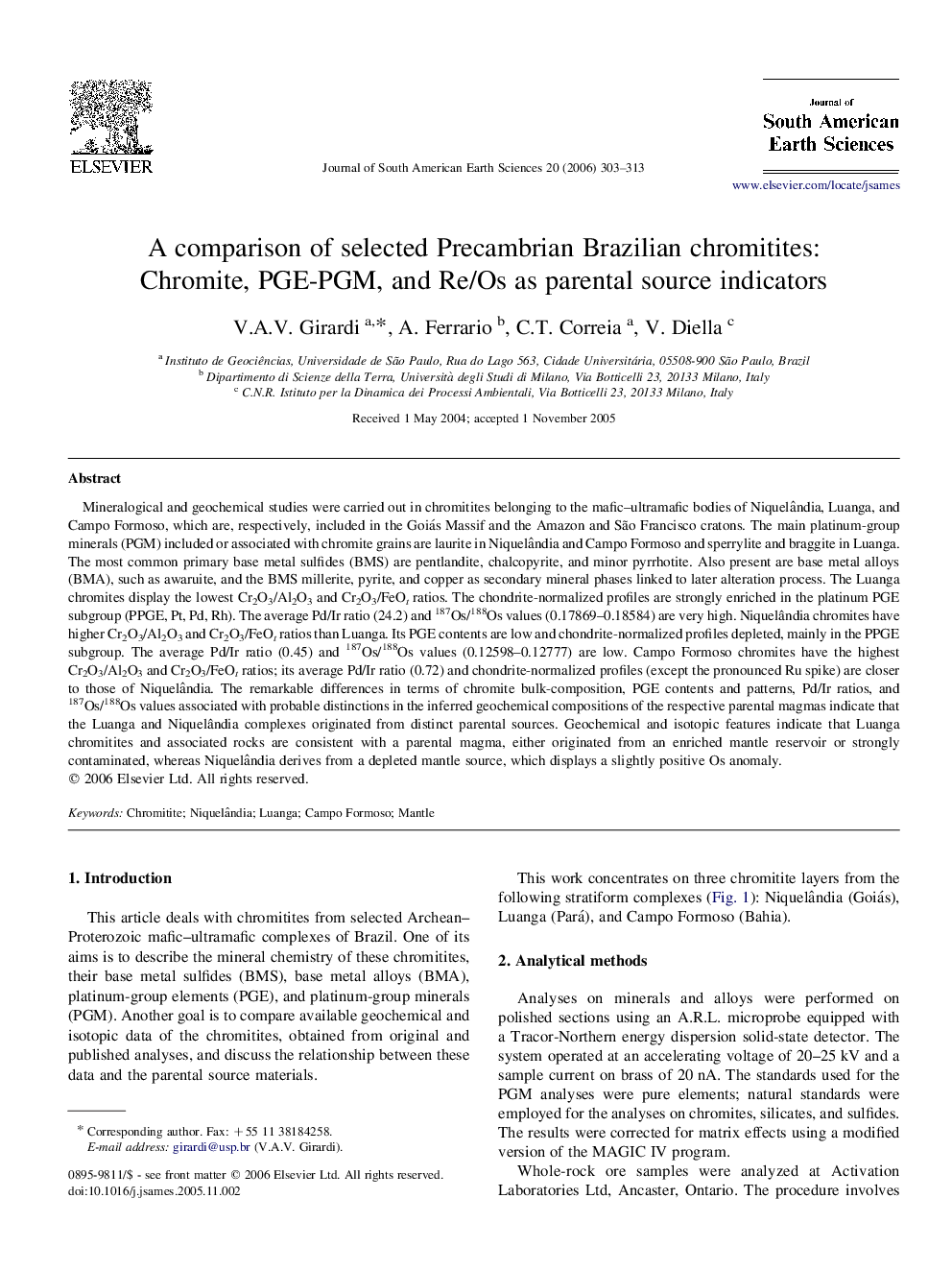| کد مقاله | کد نشریه | سال انتشار | مقاله انگلیسی | نسخه تمام متن |
|---|---|---|---|---|
| 4683022 | 1635184 | 2006 | 11 صفحه PDF | دانلود رایگان |

Mineralogical and geochemical studies were carried out in chromitites belonging to the mafic–ultramafic bodies of Niquelândia, Luanga, and Campo Formoso, which are, respectively, included in the Goiás Massif and the Amazon and São Francisco cratons. The main platinum-group minerals (PGM) included or associated with chromite grains are laurite in Niquelândia and Campo Formoso and sperrylite and braggite in Luanga. The most common primary base metal sulfides (BMS) are pentlandite, chalcopyrite, and minor pyrrhotite. Also present are base metal alloys (BMA), such as awaruite, and the BMS millerite, pyrite, and copper as secondary mineral phases linked to later alteration process. The Luanga chromites display the lowest Cr2O3/Al2O3 and Cr2O3/FeOt ratios. The chondrite-normalized profiles are strongly enriched in the platinum PGE subgroup (PPGE, Pt, Pd, Rh). The average Pd/Ir ratio (24.2) and 187Os/188Os values (0.17869–0.18584) are very high. Niquelândia chromites have higher Cr2O3/Al2O3 and Cr2O3/FeOt ratios than Luanga. Its PGE contents are low and chondrite-normalized profiles depleted, mainly in the PPGE subgroup. The average Pd/Ir ratio (0.45) and 187Os/188Os values (0.12598–0.12777) are low. Campo Formoso chromites have the highest Cr2O3/Al2O3 and Cr2O3/FeOt ratios; its average Pd/Ir ratio (0.72) and chondrite-normalized profiles (except the pronounced Ru spike) are closer to those of Niquelândia. The remarkable differences in terms of chromite bulk-composition, PGE contents and patterns, Pd/Ir ratios, and 187Os/188Os values associated with probable distinctions in the inferred geochemical compositions of the respective parental magmas indicate that the Luanga and Niquelândia complexes originated from distinct parental sources. Geochemical and isotopic features indicate that Luanga chromitites and associated rocks are consistent with a parental magma, either originated from an enriched mantle reservoir or strongly contaminated, whereas Niquelândia derives from a depleted mantle source, which displays a slightly positive Os anomaly.
Journal: Journal of South American Earth Sciences - Volume 20, Issue 4, March 2006, Pages 303–313